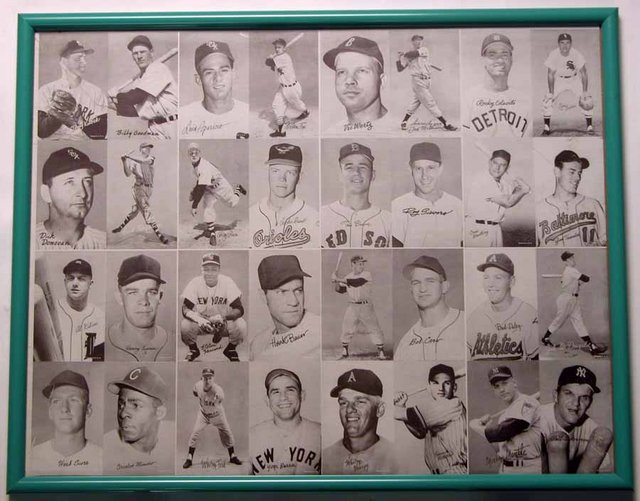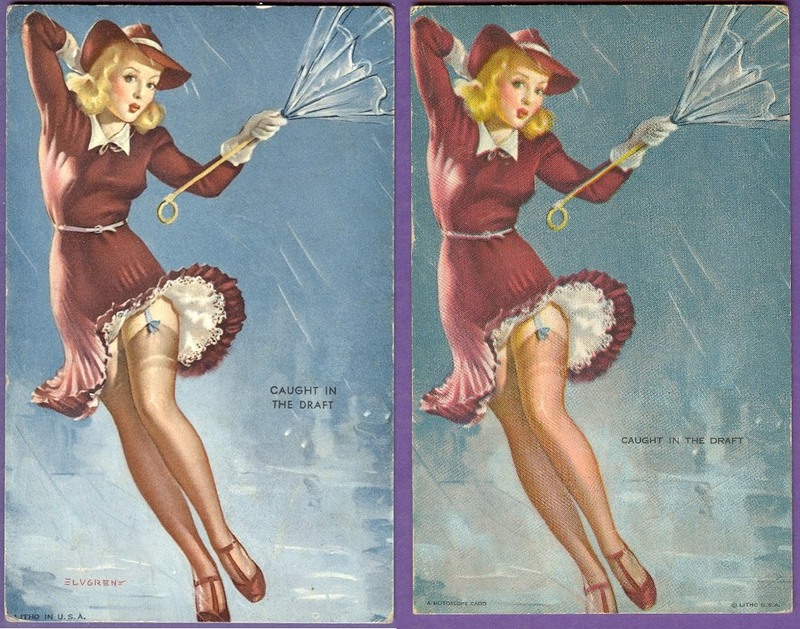|
|
|
|
#1
|
|||
|
|||
|
Quote:
Hard to believe they'd waste that much cardboard, but it does look like it would be normal sized if they cut a border around each card. Looking at these sheets that does look like what they did. http://www.legendaryauctions.com/Lot...llection-(19)# http://www.josportsinc.com/catalog/view.php?id=10900 I can't recall seeing an exhibit showing a part of another card. Not really good manufacturing practice, but cutting all four edges would have let them have few obvious miscuts. And if the sheets are any indication, that cardboard would have been wasted anyway. The only reasons I can think of to cut that way which has a lot more labor cost - 25-26 cuts instead of around 14 or less - Having no obvious miscuts. maybe some flexibility in size? Like if a competitors machine took cards a bit narrower or wider they could adjust for that. I'd think that the other companies would be looking to copy ESCO so they could get their cards into the machines of the one with more market share. Maybe there was some sort of machine that sold something else close in size? If the cutting was not guillotine, but die cutting the whole sheet at once. I don't think that's realistic. Their printing was low tech, and die cutting the whole sheet would be pretty advanced. All mine are lower grade, so the stuff that would indicate die cutting would be long gone. But the nice ones aren't even close. Steve B |
|
#2
|
||||
|
||||
|
Steve, the sets from Legendary are white-bordered. The issue in question was borderless. The uncut sheets were not oversized and cut down. They had very slight borders between four-card groups but were otherwise full bleed borderless in the four-card groups, so no card would have more than a very slight border on two sides. Here is an example of a typical sheet:
 Also, as far as I know, they would never adjust for other company machines. There was no competition by the 1950s anyway. Mutuscope closed down in the late 1940s and its artwork went to ESCO, which reconfigured the girlie artwork so it could issue several card series in its size. Here is an example, with the ESCO product being the larger one: 
__________________
Read my blog; it will make all your dreams come true. https://adamstevenwarshaw.substack.com/ Or not... Last edited by Exhibitman; 05-28-2013 at 11:07 AM. |
|
#3
|
|||
|
|||
|
I was hoping the sheets of the bordered cards would show what I was thinking a bit better.
Here's a better example. Billy Goodman, on the sheet his entire hand is there at the left, and on the right there's more belt showing. On the cards as they were sold the edge of his hand is cut off, and the edge almost always touches the edge of the belt loop at the right. (Shown for everyone else, I'm betting you've got at least one  ) ) So I'm thinking they cut a strip out from between the cards, I looked at a few others and they all are both narrower and shorter than the sheet image. Most don't show it as well as Goodman. The adapting to other machines was a guess as to why they'd do the cutting that way, which does take more cutting. The competition being gone by the late 40's is a good point, so it probably wasn't for that. Probably for quality then. Steve B |
|
#4
|
||||
|
||||
|
Interesting point on the cutting. I think what I need to do when I have the time is to place it side by side with an actual Mays and scan them both to see whether the image is larger or whether it is a cropping issue. Unfortunately, that doesn't change the issue with the card stock itself being wrong.
__________________
Read my blog; it will make all your dreams come true. https://adamstevenwarshaw.substack.com/ Or not... |
|
#5
|
|||
|
|||
|
The odd stock is puzzling for sure.
A possibility is that it might have been printed on a sheet of stock used to protect the actual stock in shipping? Total long shot, but I have a card like that. Printed on a paper that's very obviously not what it was issued on and that matches some box liner materials pretty well. Steve B |
|
#6
|
||||
|
||||
|
Interesting theory but not how ESCO did it. They shipped the cards in 500 count bricks wrapped in heavy paper. Every card counted.
At this point I'm pretty much ready to concede that it is a production art piece of some kind and leave it at that.
__________________
Read my blog; it will make all your dreams come true. https://adamstevenwarshaw.substack.com/ Or not... |
|
#7
|
|||
|
|||
|
What I meant was a sheet of stock added above and below the cardboard stock to protect it in transit from the paper distributor or mill to ESCO.
I'm not sure how Dexter shipped, But since it's the back only from a coke premium I'm pretty sure it's a protective sheet that just got into the production stack and went all the way through. The shop I worked for got most of the paper in boxes with sometimes a sheet of kraft paper wrapping it if the stuff was expensive. Other stuff came on pallets stacked about 5 ft high. 2500 Lbs of paper stacked and wrapped with a heavy paper wrapper. But it usually had cardstock top and bottom. And a couple heavy corner bits to protect the whole thing from the straps holding it to the pallet. Those cardboard sheets were occasionally the exact same stuff Topps cards were made from. I had the guys make me a few gag cards that were blank on both sides.  Steve B |
 |
|
|
 Similar Threads
Similar Threads
|
||||
| Thread | Thread Starter | Forum | Replies | Last Post |
| SSPC oddity | steve B | Postwar Baseball Cards Forum (Pre-1980) | 0 | 05-25-2011 09:49 PM |
| Original Art for Ezzard Charles Exhibit Card with Original Exhibit Letter | Archive | Everything Else, Football, Non-Sports etc.. B/S/T | 2 | 02-01-2006 08:46 PM |